Article and photos by Rob Danforth
Odds and Ends:
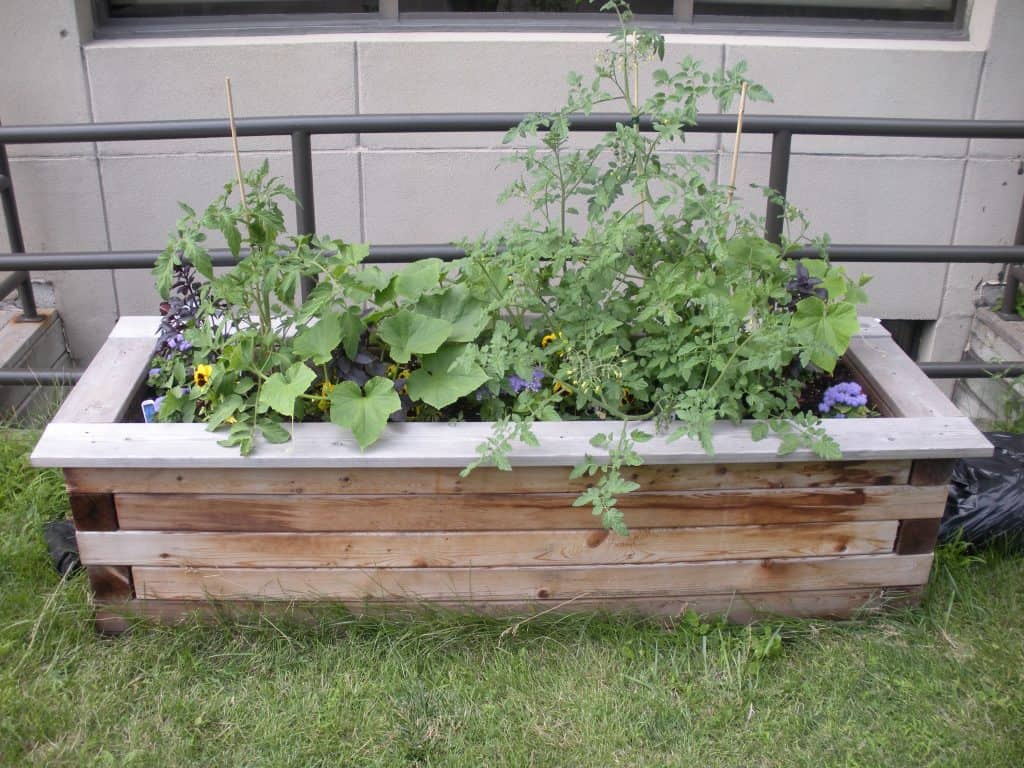
- Biodiversity, bug hotels, & bug restaurants attract and keep helpful pollinators and predatory insects. Avoid large sections of one kind of plant; monocultures attract swarms of hurtful bugs and they will build homes in the neighbourhood to be near their groceries. Fragrant flowers and herbs interplanted in rows & containers will offer diverse bug food supplies, and confuse hurtful bugs – consider planting flowers or adding containers in or near your plots, raised beds, and box beds. Bugs hunt by smell and colour. Yellow is popular for daytime (many flowers feature some yellow) and white for night — white is more easily seen in the dark, and white flowers tend to have stronger fragrances for night time pollinators and predators. Note: plants have a fragrance even before setting blooms (e.g., fragrant herbs, tomatoes). If you plant it, bugs will come! Tip: sick or stressed plants actually attract many more harmful insects – nature’s necessary janitorial service.
- Delayed & companion planting reduce time and effort battling bugs. Delayed planting avoids the bug rush depending on the life cycle of specific bugs (e.g., Colorado potato beetle is active May to early July so plant potatoes in mid June to miss the adults that are foraging and egg laying). Companion planting can discourage the hurtful bugs (e.g strong scented herbs and flowers hide the veg.) and encourage predator insects (e.g., bugs that eat bugs attracted to flowering borage, coriander, dill, lavender, mint, thyme, zinnias, yarrow…).
- Being pro-active instead of re-active can save both time and effort later: aerate (loosen) garden soil, potting mixes, and compost piles for water and air penetration; trim all foliage for air circulation to reduce fungal problems; do not wet leaves when watering to avoid airborne fungal, bacterial, and viral problems; keep lower leaves from kissing the soil to avoid soil borne diseases, creepy crawlers, and slimy sliders; and cover bare soil (mulching) to keep soil splash from reaching lower leaves, to suppress weeds, conserve moisture and add value to the soil. These actions will reduce problems and the time spent addressing them.
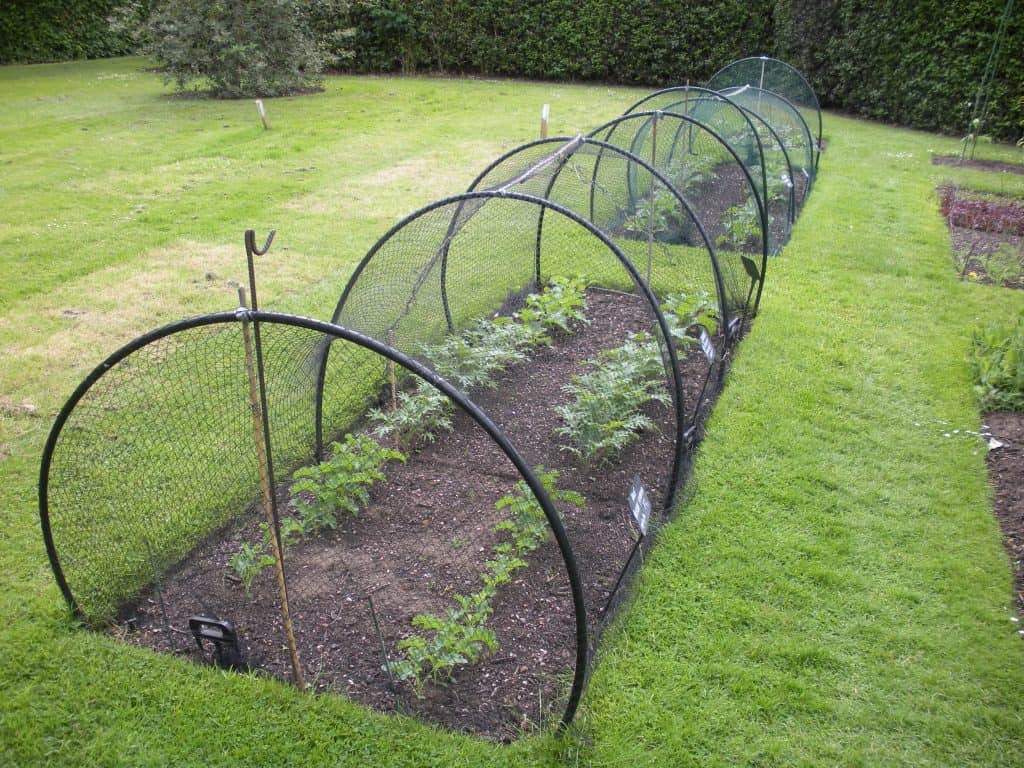
- Install early, reusable insect and critter barriers to avoid damage to vegetables, leaves, seeds, bulbs, flowers, and berries. We have found that reusable barriers (e.g., row covers, plastic netting, chicken wire, hardware cloth, poly tunnels, aluminum foil, egg shells, etc.) are the best and most reliable deterrents against all insects and critters (e.g., deer, skunks, raccoons, voles, mice, rats, dogs, cats, birds, rabbits, chipmunks, groundhogs, and squirrels… we have had them all!). All other methods – we experimented with many – are time consuming and labour intensive, not to mention the $’s involved.
- Fall garden stubble left until spring will shelter predator insects & pollinators over winter – like natural bug hotels. They will contribute to the biological controls that help you battle the hurtful bugs and reduce your time with battle gear.
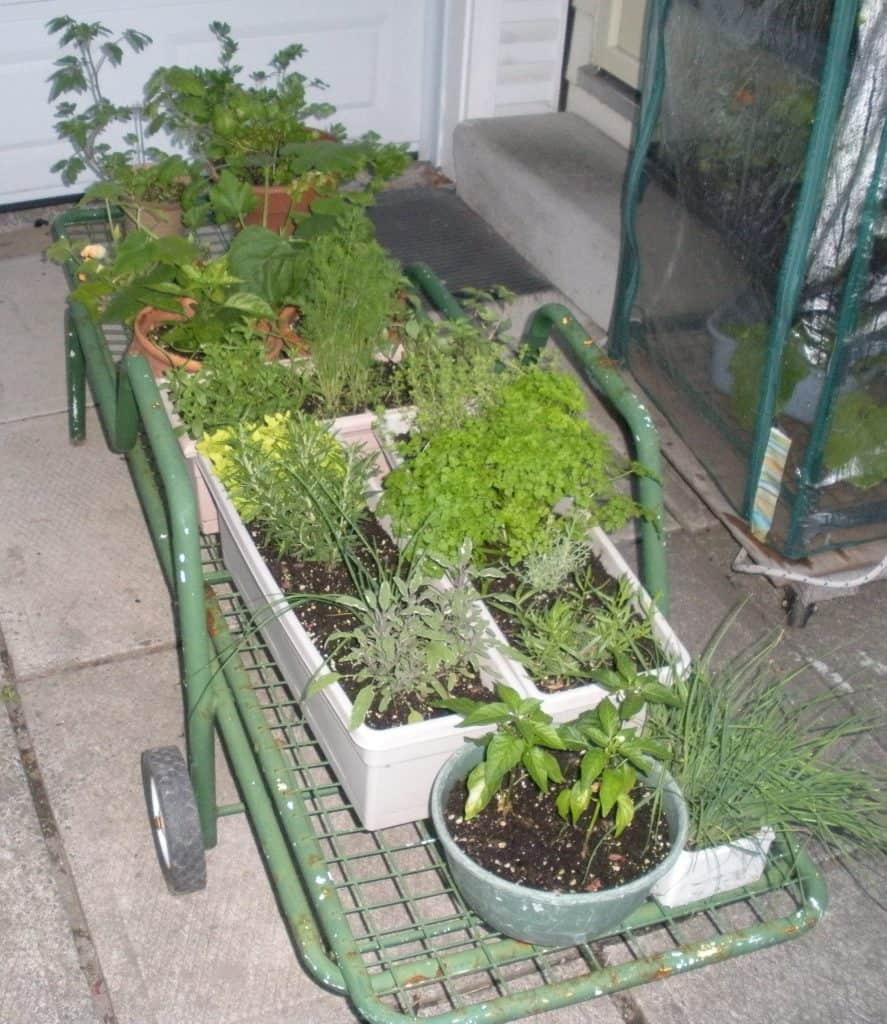
- Re-positioning for best Sun: if you have a number of portable containers, you might consider a sun bus (e.g., wagon, wheelbarrow, dolly, wheeled chaise…) to move many of your plants all at once into the shifting spring and fall sun (or away from frost) to save time and effort moving them one by one!
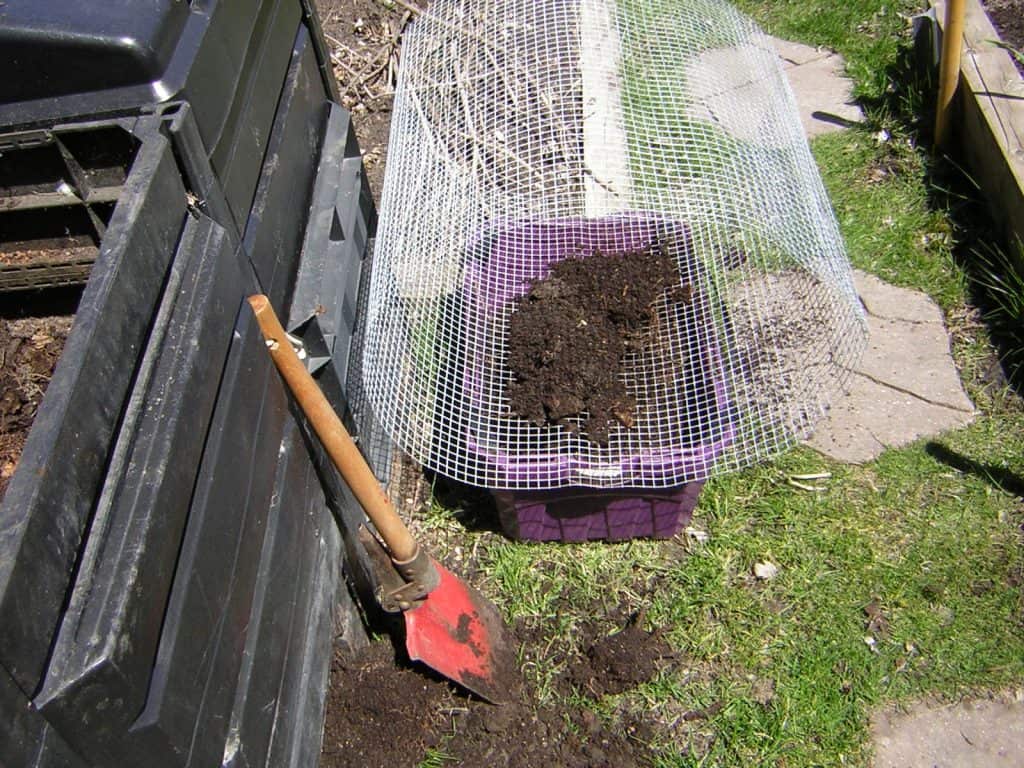
- Compost/composted manure (4 cm/1.58 inches – no need to rake-in) applied in fall to plots and large containers and then covered (mulch for plots; tarp for containers) lets nature do the work of mixing & amending soil instead of you. Compost will replace nutrients plants have taken from the soil, retain moisture, add structure to the soil (more friable), helps fight disease, and balances pH. What’s not to love?
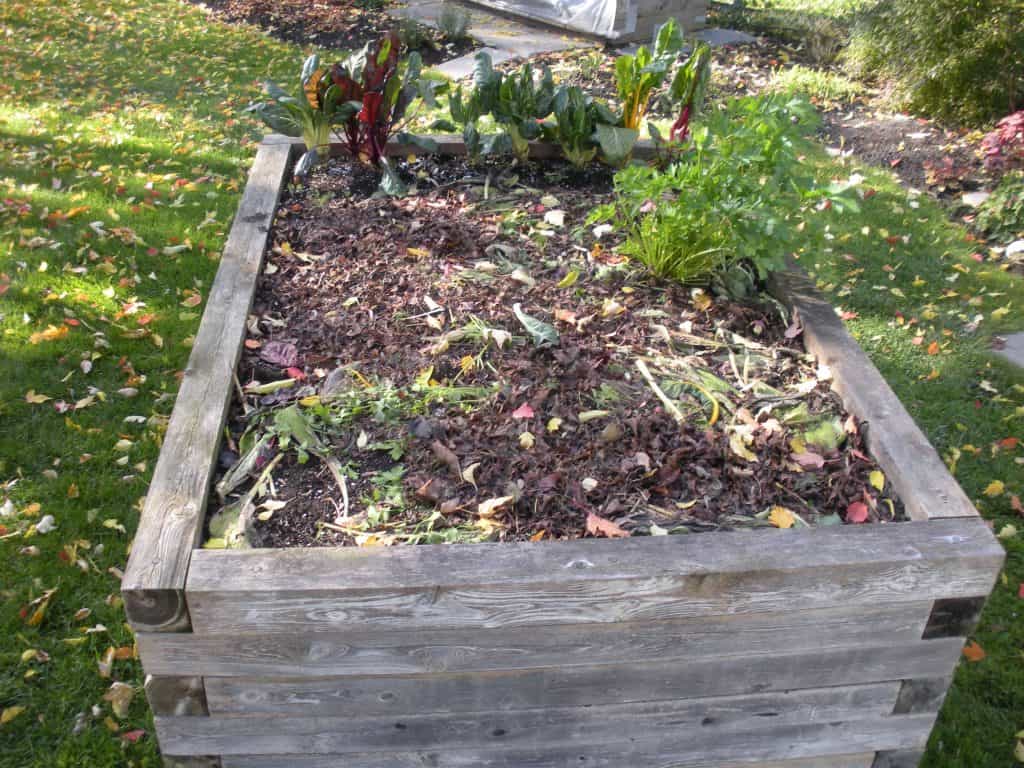
- Shredded leaves (as a mulch) & garden debris (soft parts of plants you cut & drop) spread on a plot, raised bed, or box bed, add nitrogen, carbon, and many trace nutrients; reduce erosion; and discourage cat toileting and squirrel gardening. Worms will take it down for you! This is particularly helpful if you are unable to compost. However, leave some bare soil in spots as some helpful bugs (e.g., squash bees) will nest in the soil (e.g., small hole, only as round as a pencil).
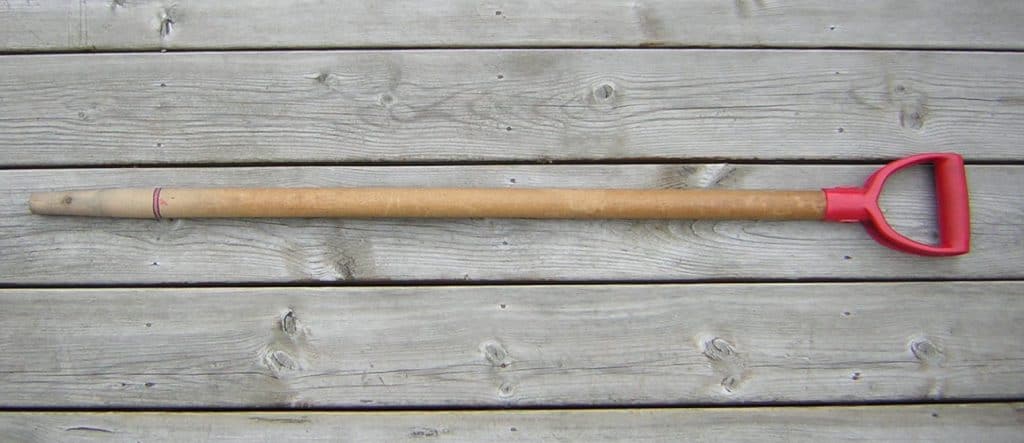

- Leeks dropped into dibber holes let rain and your watering efforts back-fill transplant holes and save frequent hilling. Tip: a shovel handle minus the shovel end and marked in inches from 1 to 6 inches makes an excellent stand-up dibber: aerate the soil with a claw, plunge in the dibber to 6-inches/15 cm, twist the handle to withdraw, and move on. Drop in the leek seedling and then water the row; do not backfill with soil. We have used this method successfully for many years now.
- Onion sets and garlic bulbs dropped into 2-inch (onion), and 3-inch (garlic) dibber holes and then back filled and covered by a field hoe saves crawling around on hands and knees to plant, and speeds up the whole process. Tip: same stand-up dibber as for leeks.

- Tools: Stainless steel tools will save you a lot of time in tool care. They are not hurt if forgotten in the rain, and cleaning by water or dry brush is easy. They do not hold a sharp edge quite as well as some other metals (e.g., high carbon steel); however, they do not rust which saves time in wire brushing, sanding, sharpening, and then lightly oiling rusted tools.
Gardening is more enjoyable if uncomplicated and streamlined! Where possible, be pro-active to save time and effort so you have fewer worries and more time to enjoy your garden. Grow a mix of food and flowers, or grow an edible green screen to distract you and your guests from less interesting sights!
Past DTE Notebook, garden articles are listed at https://ottawa.cog.ca/seasonal-resources/